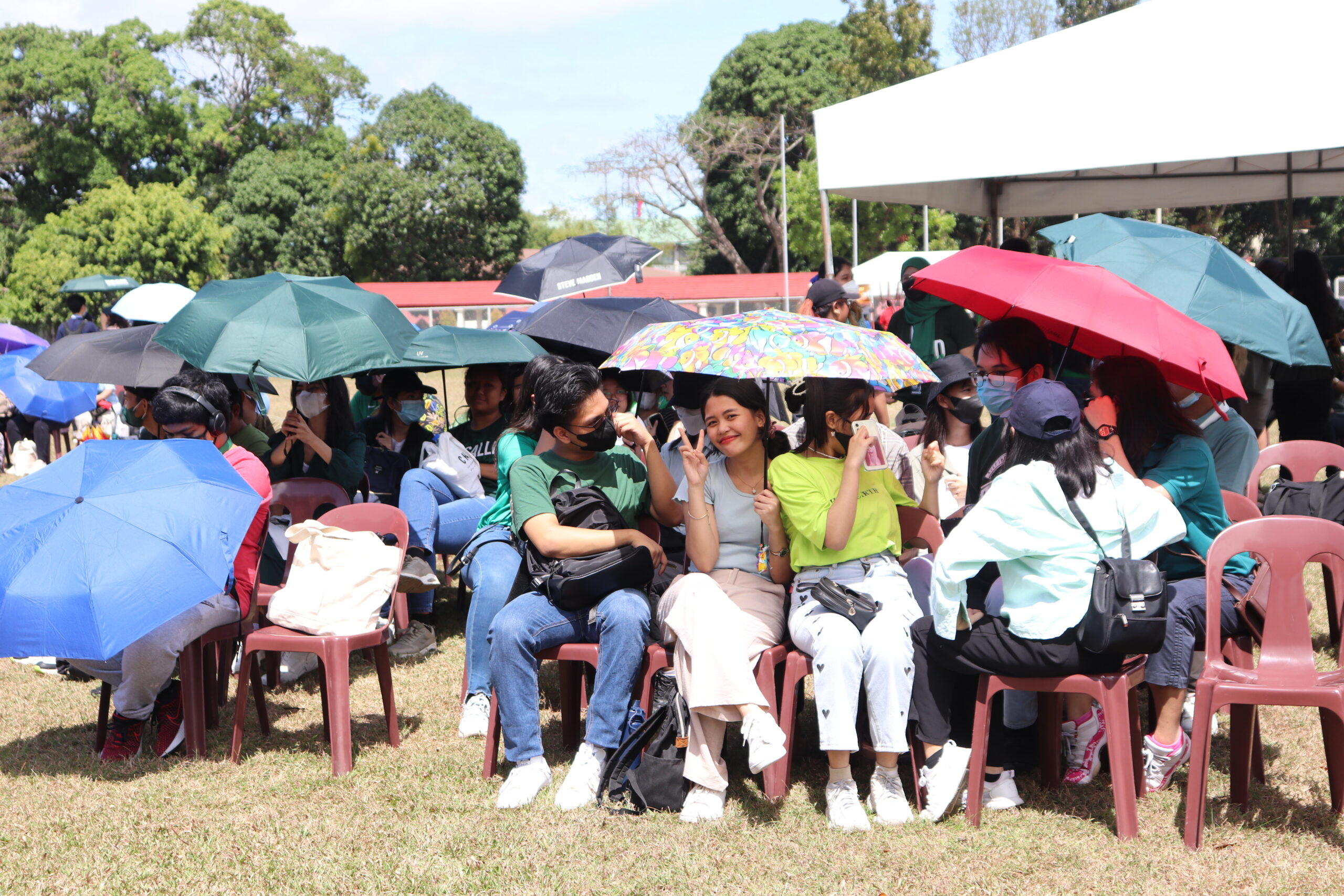Who let El Niño cook?
As Chappell Roan once said, it’s like a hundred ninety-nine degrees!
Currently, Filipinos are experiencing the effects of El Niño, which is a periodic weather phenomenon characterized by elevated ocean surface temperatures or above-average sea surface temperatures occurring in the eastern equatorial Pacific, according to the Philippine Information Agency (PIA). The Philippines is currently facing extreme drought, rising sea levels, increasing precipitation, and intensifying wind patterns and tropical cyclones because of this. From a micro level, the intense heat has invaded routine tasks, creating consequences that go beyond its peak months.
Fiery embrace
El Niño has brought scorching heat waves that are predicted to push through the entire archipelago until next month. Philippine Atmospheric, Geophysical, and Astronomical Services Administration (PAGASA) estimates a 40.3 to 40.7 degrees Celsius in Northern Luzon by the end of May. If it feels like we are in a sauna of discomfort 24/7 right now, climate predictions tell us that there is more to come and it is for the worse.
Dr. Ana Solis, chief of Climate Monitoring and Prediction ng PAGASA, emphasized the Urban Heat Island Effect wherein those in urban areas are affected excessively, because the heat of solar emission that hits concrete such as stones, buildings, and roads made of cement is intense. Therefore, for those in metropolitan places, it quite literally feels like the sun’s embrace.
Even prior to the anticipated peak of El Niño in the first quarter of 2024, drought conditions have already affected Nueva Ecija and Cavite provinces, as reported by PAGASA. During its peak period, approximately 51 to 63 areas are expected to endure extended droughts as per a report by ABS-CBN News. It is not only the people who feel the fiery strangle, but also, unfortunately, the land.
In the inferno
Unlike Olaf who enjoys warm hugs, we hate it at this point, specifically when it’s around 10AM to 3PM. Rapid rises in heat, according to the World Health Organization, compromises the body’s ability to regulate temperature and can result in a cascade of illnesses, including heat cramps, heat exhaustion, heatstroke, and hyperthermia.
Many rely on healthcare facilities to combat these effects, but those same premises are experiencing power and water issues which are essential for hospitals. Health Secretary Teodoro Herbosa claimed that the Department of Health (DOH) hospitals are ready for El Niño and that “they will stay up and running despite anticipated power and water challenges as contingency plans are in place.”
Though the quote is supposedly assuring, it is vital to keep in mind that this is not the predicted peak of the phenomenon. Once that time comes, just how sure can the people be regarding the availability of functioning medical institutions?
People are also not only affected personally, but also in other aspects of society. Accounting for 103.2 percent of the country’s food groups was contributed by “cereal products,” or agricultural crops. Presently, Department of Agriculture (DA) Secretary Francisco Tiu Laurel acknowledges that rice prices are projected to retain or inflate due to El Niño’s effects.
Moreover, the land tillers, who provide us the rice we cannot live without, are bearing the heaviest weight due to El Niño. Cases continue to be shared online, such as Emelio Secretaria who has given away 15,000 kilos of tomatoes because they no longer pass the standards of buyers and are too small from the lack of water supply.
The drought, lack of water, and skin-piercing temperature has made its way through sectors beyond health and agriculture. The masses themselves are also in this inferno.
Learning in embers
The extreme heat has surpassed 42 degrees Celsius in certain areas on a daily basis. This resulted in the suspension of classes across 5,000 Philippine schools in the first week of April 2024, which in turn interrupted the education of 3.6 million students.
Meanwhile, local government units (LGUs) have also continued to suspend face-to-face classes due to heat indexes reaching dangerous levels, 42 degrees Celsius and above. 11 cities have done so as of April 24, with 4 being from CALABARZON. Cavite’s Heat Index Forecast has even reached 47 degrees Celsius according to PAGASA as of April 25, with local governments, such as in the City of Dasmariñas, suspending face-to-face classes due to the extreme heat conditions. The Lasallian Mission Festival (LMF) 2024, which is supposed to run for a whole week, coincided with the week-long suspension of face-to-face classes by the LGU.
In the University, students have voiced their concerns regarding the hot conditions. Andrea Ulit, a second-year student from AB Psychology, said, “The heat is sometimes too much. Walking around La Salle has become a challenging task given the temperature. It sometimes causes headaches and difficulty in breathing. Although the buildings are equipped with air-conditioning, which is very helpful and I am grateful for, it is hard to go back and forth between classes and walk or go to the Food Square.”
Despite how the University dress code was relaxed starting April 8, it specifies that the only modification is non-wearing of prescribed business attire during scheduled days. Students are still expected to wear sleeved tops, pants, business style shorts, skirts, and dresses no more than two inches above the knees, even when it’s so scorching hot that the glued sequins on your clothes are one step away from melting down. So, remember to keep those tops either thick enough to not be see-through or wear proper garments inside when walking on campus during these extreme heat conditions.
On the other hand, cancellation and shifting of modalities disrupt the school calendar, which disturbs the expected flow of lessons and activities. Professors are in need of readjusting their lesson plans while students are faced with having to cope with missed discussions. Despite this, health is a primary concern when weighing out the consequences of continuing the face-to-face set-up. It is preferable that we, students, are safe first before we are educated and the same goes with the entire DLSU-D community.
***
Long-term effects of the current weather lie upon us all, and the continued worsening of El Niño’s heat can be correlated to climate change. “If you look at a chart of global average surface temperatures over time, you’ll see a steady rise due to increasing greenhouse gas concentrations in the atmosphere, but then you see ups (El Niño) and downs (La Niña) every few years,” said Michael McPhaden, senior scientist at the National Oceanic and Atmospheric Administration’s Pacific Marine Environmental Laboratory and affiliate professor of oceanography at the University of Washington.
We may not be able to undo the damage we have dealt, but we can prevent it from getting worse. If we want to be cared for by the environment, then we must care for it first. Unless we want to be burnt by even hotter flames in the upcoming years, then more environmental changes must be made immediately. We cannot let El Niño cook for any longer.
Photo slider by Naomi Hannah de Lima



